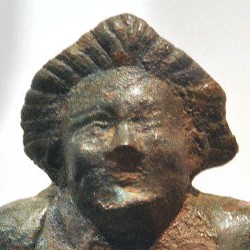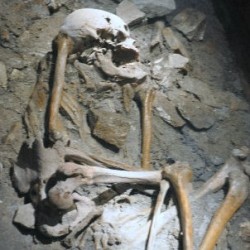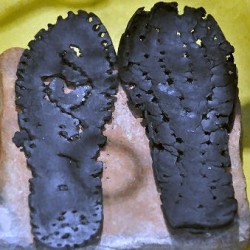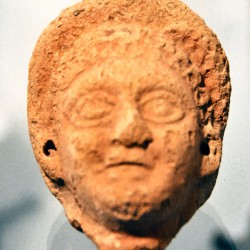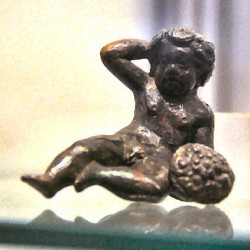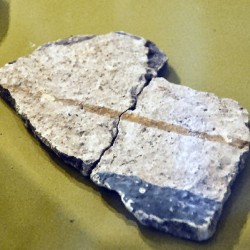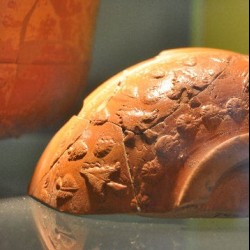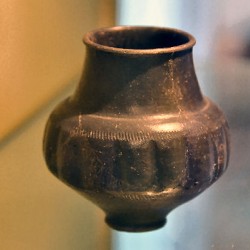Aardenburg
Q955Aardenburg: coastal fortress in Germania Inferior. The ancient name may have been Rodanum.
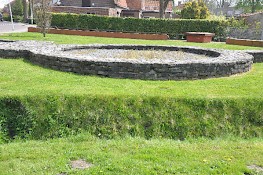
In 173 CE, the Chauci, a tribe living in what is now called Groningen and Ostfriesland and well-known for its sea-faring qualities, attacked what is now called Flanders. They had some success, but in the end, they were defeated by the governor of Gallia Belgica, Didius Julianus. The Roman government responded by building several forts along the coast of what is now Zuid-Holland, Zeeland and West-Vlaanderen.
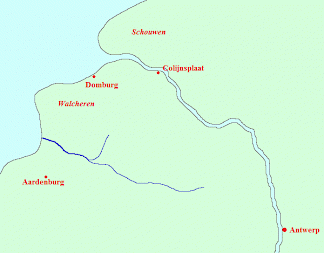
Aardenburg was one of them. Originally built in wood, renewed in c.190, and situated on the east bank of a small river, the Rudanna, it controlled the route to Maldegem and beyond. Its walls measured about 150x240 meters; they were built from natural stone imported from Tournai and the Eifel Mountains. About a thousand soldiers may have lived over here, both infantry and cavalry. Roof tiles with the stamps CIIA and CIIS prove that the units were called Cohors Secunda A... and Cohors Secunda S...; we do not know where they were from, but the oldest pieces of Samian ware were produced in Rheinzabern, suggesting that the first garrison arrived from the land of the Rhine and Moselle.
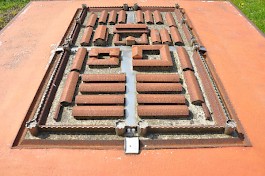
The new settlement must have had serious consequences for the native population, the Menapians, who had until then continued their old life style, becoming Romans only very slowly. Now, all of a sudden, they had to produce food and other products for the garrison, and received coins in return. The presence of native ceramics, fish, cockles, and mussels, within the fort proves that they managed to produce what was needed. In return, they suddenly had trade contacts with the valley of the Scheldt, with Britain, Gaul, and even Spain. Archaeologists have found Samian ware and pieces of wall painting - a luxury the Menapians can never have seen before.
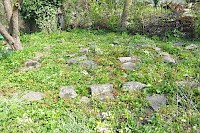
It is possible that after 220, the Romans concentrated their forces in nearby Oudenburg. The military settlement at Aardenburg may have been taken over by citizens. In any case, a temple was added, which is unusual inside a fort.On the other hand, the defense structures were improved with an additional ditch.
After 260, the fort was refortified - this time out of stone - by the rulers of the Gallic Empire, but it was eventually evacuated in c.274, probably after an attack by Saxonian pirates, who appeared on the Flemish coast after the collapse of the Gallic Empire, which had been reunited with the "real" Roman Empire by Aurelian. A skeleton found at Aardenburg may belong to one of the attackers, as it is inhumated, not cremated. A second reason to abandon the site may have been a change in the environment. Because salt had been extracted from the mires, the sea was increasingly dangerous, and the land along the little Rudanna was vulnerable.
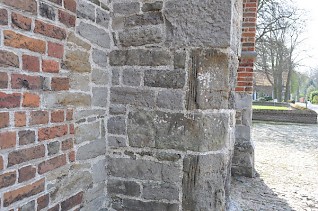
The walls were destroyed by the last garrison, perhaps in the final years of the third century, to make sure that it would not become a castle of the Saxons. The temple was destroyed by fire, but not necessarily on this occasion..
The site lay abandoned for centuries, until monks from Ghent's Saint Bavo's Abbey settled over there, trying to develop the area in the face of Viking attacks. When peace returned in the early tenth century, they dedicated a church to Saint Bavo inside the ancient fort, reusing many natural stones that had once been part of the fort.
The new town was called after the Roman fort: Rodanburg, which means something like "fort Rodanum". The current name, Aardenburg, is by metathesis derived from this medieval name.
Literature
- J.A. Trimpe Burger, Romeins Aardenburg (1992)
- "Romeins erfgoed", special issue of Zeeuws tijdschrift 58 (2008)
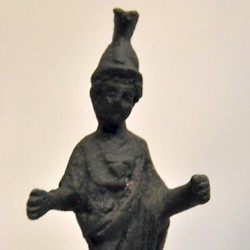 Aardenburg, Figurine of Minerva |
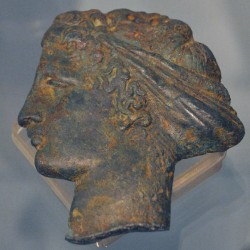 Aardenburg, Votive offering? |
